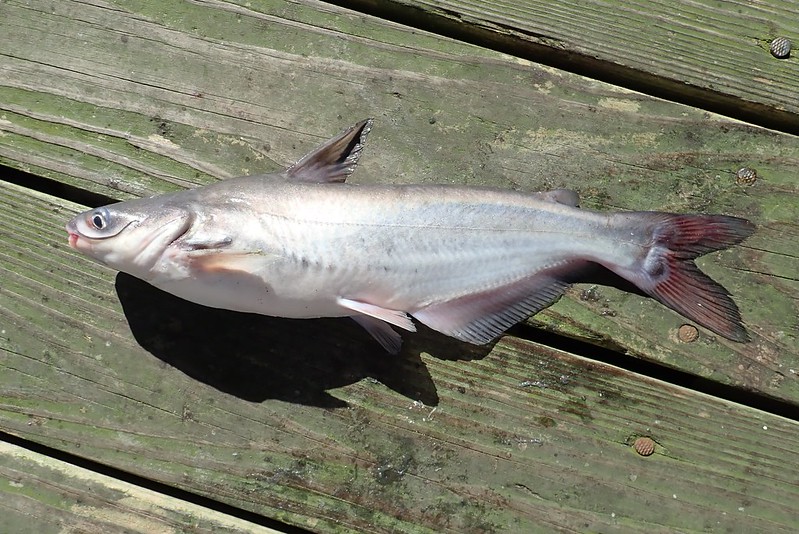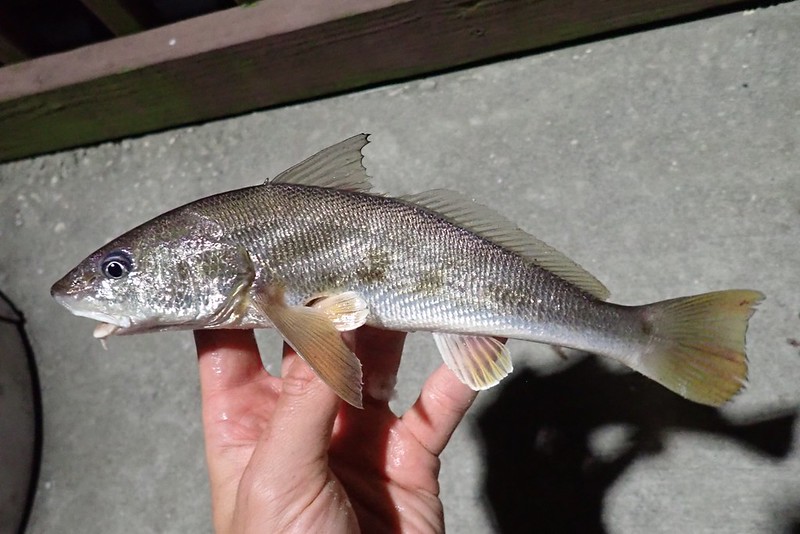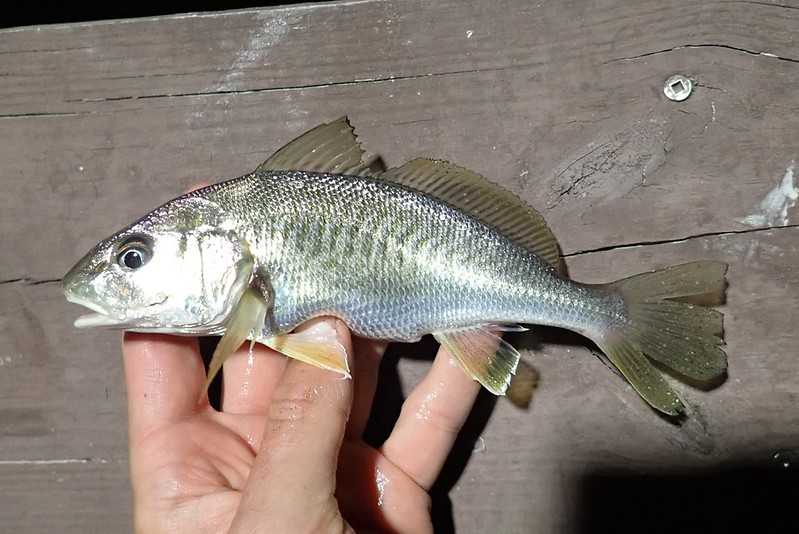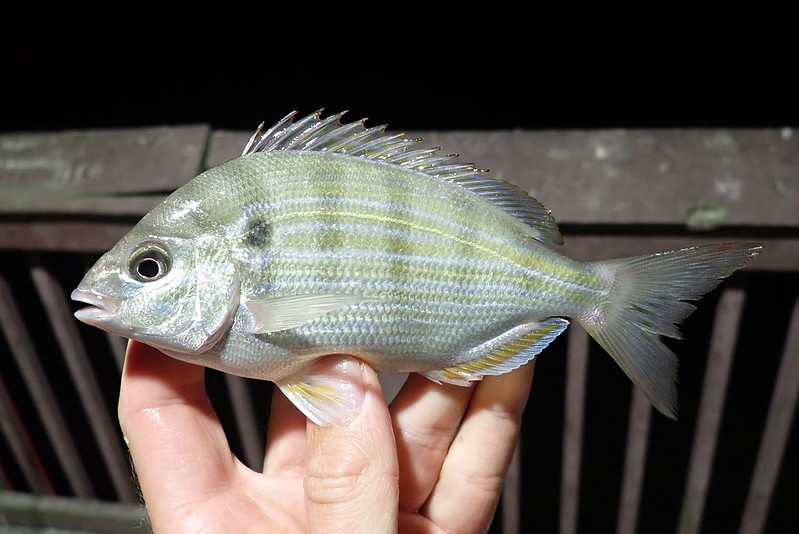Back in September I was in Louisiana for a conference, and I was able to fit in a little fishing on the side while I was there. The first night I drove across the Lake Pontchartrain Causeway to check out Sunset Point Fishing Pier in Mandeville, LA. It was hot and humid, and coming from San Diego the humidity was really a shock. There was a nice breeze though, and while it was probably a little windy for fishing, it made the humidity more bearable.
Lake Pontchartrain is a brackish estuary with salinity about half of pure seawater. I did my homework before the trip, and it looked like hardhead catfish and gafftopsail catfish are common catches. The latter would be a new species for me, so that was my primary target. I also needed some common fish like red drum, black drum, and a couple other croaker and shark and ray species so I was hopeful that I could add a few new ones to the list. I fished shrimp on two rods, one with a fish finder rig and the other with a high low rig. Hours went by, and I was only able to catch two fish, both of which were blue catfish. It was supposed to be mostly saltwater species at this pier, so what was going on?
Blue Catfish (Ictalurus furcatus)
I chatted with a few locals, and apparently the Army Corps of Engineers was releasing freshwater from the reservoir upstream to prevent flooding. It had rained a lot a week or two before I arrived, but I didn't realize it would still be having an affect on the fishing. I enjoyed the sunset and then packed up my gear to head back to the hotel. Originally I planned to fish a few hours into the night, but there was no point if it was only going to be freshwater species I'd already caught.
Fast forward to the end of the conference, and I had one last opportunity to catch some fish before I flew back to San Diego. I figured Lake Pontchartrain again would be wasting time, so I headed east to find pure saltwater. A quick Google search turned up the Garfield Ladner Pier in Waveland, MS, which was a pretty short drive despite being across the state line.
I've fished quite a few piers over the last decade, and surprisingly this was one of the best I've experienced. It had good lighting, benches, and roofed sections. I set up about half way to the end with the plan of fishing for a couple of hours and then moving down to the end to see if the species lineup changed. Switching to pure saltwater made a world of difference. The water around the pier was swarming with small sand seatrout. If you didn't get your bait down to the bottom quickly you'd hook one almost immediately.
Sand Seatrout (Cynoscion arenarius)
Bait on the bottom would sit for a little while longer, but before long a catfish would pick it up. Most of them were hardheads, a species I picked up last year in Tampa, but twice I hooked nice sized gafftopsail catfish only to have them shake off the hook as I was lifting them up to the pier. I didn't let it bother me too much, because I had all night and wouldn't leave until I caught one, but it still hurt seeing a new lifer fall back to the water before I could get it to hand.
Hardhead Catfish (Ariopsis felis)
Much less common than the seatrout and catfish were the croakers. I caught two species - southern kingcroaker and Atlantic croaker - and while neither was a new species, I was happy to finally have a photo of Atlantic croaker. I caught one back in 2012 from the Skyway Pier in Tampa, but it slipped out of my hand and went straight down a PVC drain hole to the water below before I could take a photo. It's not something I've been proud of. Now if I can just find a gulf kingcroaker, I'll have photos of all the fish on my lifelist!
Southern Kingcroaker (Menticirrhus americanus)
Atlantic Croaker (Micropogonias undulatus)
The night was getting late, so I moved down to the end of the pier. I figured my odds of getting a gafftopsail would be the same, and if it got really late I could always come back to where I hooked the two earlier. I set up one of the rods with shrimp for smaller fish and the other with cut bait on a large circle hook for small sharks, rays, or even a big drum.
Moving was a good choice, because it only took a few minutes to catch a gafftopsail. It was much smaller than the two earlier ones, but as they say, a fish in hand is worth a lot more than one kerplunking back into the water after shaking off your hook.
Gafftopsail Catfish (Bagre marinus) - new hook & line species #646
The cut bait had a few taps, probably from small catfish, but nothing big picked it up. I caught more of each of the species above, and the only addition was a pinfish. I won't ever say no to a species because I like having the content for blog posts, but I'm glad there weren't more pinfish out that night. Anyone who's fished a pier in Florida knows what I'm talking about!
Pinfish (Lagodon rhomboides)
I called it a night around midnight so I could get back to the hotel and catch some sleep before flying out in the morning. It took a lot of effort to catch one new species, but I was glad to get out of the city and see a part of the country that I wouldn't otherwise get to see. Hope you enjoyed the read!











No comments:
Post a Comment
Note: Only a member of this blog may post a comment.